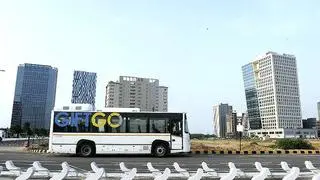The Goods & Services (GST) Council is expected to resolve issues related with inverted duty structure for various sectors in its 37th meeting scheduled to take place in Goa on September 20.
The inverted duty structure, where there is higher duty on input(s) and lower duty on output, has caused two problems. First is the refund in the GST regime, and second such a structure encourages imports hurting the domestic industry. There are at least seven industries including textiles and railway wagon facing difficulties on account of inverted duty structure.
Senior Finance Ministry officials confirmed that efforts are on to resolves the problems especially related with refund and therefore rates related with inverted duty structure are being restructured under GST.
According to MS Mani, Partner with Deloitte India, there is a need to correct inverted duty situations in a few sectors to assist both suppliers of inputs and their buyers from a working capital standpoint. “In a situation where growth has tapered, all elements of cost, especially indirect taxes would be an area of focus,” he said.
Any registered assesee can claim a refund of unutilised input tax credit on account of inverted duty structure at the end of any tax period where the credit has accumulated on account of higher tax on input and lower tax on the output.
Exceptions to this are in four categories — if output supplies are NIL rated or fully exempt supplies except supplies of goods or services or both as notified; if the goods exported from India are subject to export duty; if the supplier claims refund of output tax paid under IGST (integrated Goods & Services Tax); or avails duty drawback or refund of IGST on such supplies.
The issue of refund came up before the Council at least twice — once during the 31st meeting held on December 22, 2018 and the second, during the 35th meeting held on June 21.
In the December meeting it was decided that clarifications will be issued on certain refund related matters like refund of ITC accumulated on account of inverted duty structure, disbursal of refunds within the stipulated time, time allowed for availment of ITC on invoices, refund of accumulated ITC of compensation cess etc.
The Central Board of Indirect Taxes and Custom (CBIC) issued a circular on December 31, 2018. It was clarified that refund of unutilised ITC in case of inverted tax structure is available where ITC remains unutilised even after setting off of available ITC for the payment of output tax liability.
Where there are multiple inputs attracting different rates of tax, the concept of ‘Net ITC’ as mentioned in the formulae prescribed under the CGST rules will be applicable.
This term covers the ITC availed on all inputs in the relevant period, irrespective of their rate of tax. However, industries complain that this circular has not resolved their issues completely.
The minutes of the 35th meeting said West Bengal Finance Minister Amit Mitra had written a letter to Finance Minister Nirmala Sitharaman regarding the inverted duty structure of ‘wagon industry’ and he had requested that it might be sent to the Fitment Committee.
Sithraman assured that it would be sent to the Fitment Committee.








Comments
Comments have to be in English, and in full sentences. They cannot be abusive or personal. Please abide by our community guidelines for posting your comments.
We have migrated to a new commenting platform. If you are already a registered user of TheHindu Businessline and logged in, you may continue to engage with our articles. If you do not have an account please register and login to post comments. Users can access their older comments by logging into their accounts on Vuukle.